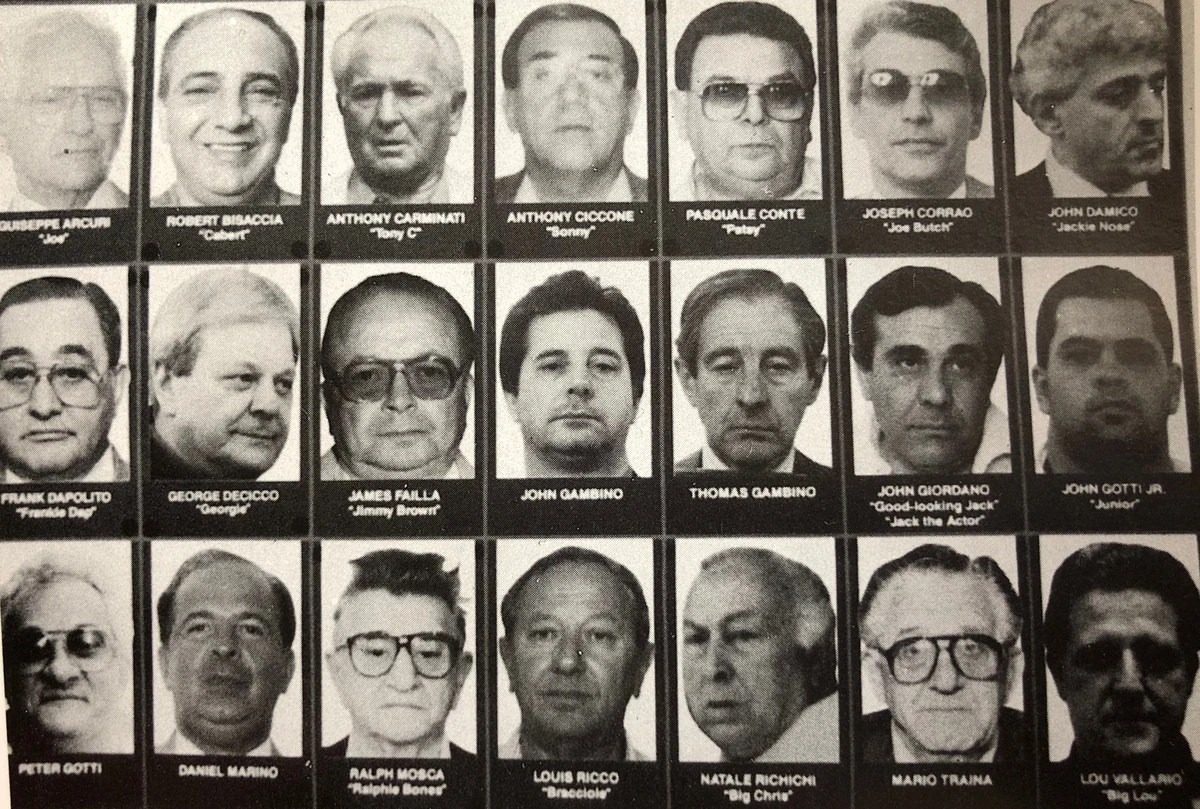For decades, the Gambino crime family has loomed large over the landscape of organized crime in America, a name synonymous with power and corruption. This infamous syndicate, with its roots entrenched in the streets of New York City, has wielded significant influence over various illegal enterprises and has been the focus of numerous investigations and law enforcement efforts. The intricate web of loyalty, betrayal, and violence that defines the Gambino family reveals a hidden world where power dynamics shift, and the line between friend and foe blurs.
As we delve deeper into the Gambino crime family, we uncover not just a criminal organization but a complex social structure that has thrived on secrecy and intimidation. The family’s ability to adapt and evolve in response to law enforcement pressure highlights a resilience that has allowed it to maintain its grip on power. Each member of this organization plays a vital role in perpetuating its influence, creating a culture where silence is golden, and loyalty is paramount.
The story of the Gambino crime family is one of ambition, greed, and a relentless pursuit of control. From its formidable leaders to the various enterprises it manages, the family has shaped the very essence of organized crime in America. But what drives this organization? What are the mechanisms of power and corruption that keep it alive? Join us as we explore the intricate and clandestine world of the Gambino crime family, a world that continues to captivate and terrify those who dare to glimpse inside.
What is the History of the Gambino Crime Family?
The Gambino crime family traces its origins back to the early 20th century, when it emerged from the chaotic underbelly of New York City. Founded by Carlo Gambino, the family quickly rose to prominence, eclipsing rival crime families through a combination of strategic alliances and ruthless tactics. Under Gambino’s leadership, the family expanded its operations across various illegal activities, including extortion, loan sharking, and drug trafficking.
Who Were the Key Figures in the Gambino Family?
The Gambino crime family has been led by several notorious figures throughout its history. Here’s a brief overview of some of the most significant leaders:
| Name | Years Active | Role |
|---|---|---|
| Carlo Gambino | 1930s - 1976 | Boss |
| Paul Castellano | 1976 - 1985 | Boss |
| John Gotti | 1985 - 1992 | Boss |
| Peter Gotti | 1992 - 2002 | Boss |
What Role Did John Gotti Play in the Gambino Family?
John Gotti, often referred to as the "Teflon Don," became the face of the Gambino crime family in the 1980s. His flamboyant lifestyle and defiance of law enforcement made him a notorious figure in organized crime. Gotti's leadership style was marked by a blend of charisma and brutality, which helped him consolidate power within the family. However, his high-profile nature ultimately led to his downfall, as he was convicted on multiple charges in 1992.
How Did the Gambino Family Operate?
The operations of the Gambino crime family were characterized by a hierarchical structure that ensured loyalty and adherence to the code of silence, known as 'omertà.' Members were expected to prioritize the family's interests above all else, with severe consequences for those who betrayed that trust.
- Extortion: The Gambinos were known for their aggressive collection of debts and protection fees.
- Loan Sharking: They provided high-interest loans to individuals and businesses, often leading to severe repercussions for failure to repay.
- Illegal Gambling: The family controlled numerous gambling operations, both legal and illegal.
- Drug Trafficking: In more recent years, the Gambinos expanded into drug trafficking, capitalizing on the lucrative market.
What Impact Did Law Enforcement Have on the Gambino Family?
Throughout the years, law enforcement's relentless pursuit of the Gambino crime family has led to numerous arrests and convictions. The FBI and other agencies have employed various tactics, including wiretaps, undercover operations, and informants, to dismantle the family's operations. Despite these efforts, the Gambinos have shown remarkable resilience, often adapting their methods to evade capture.
What is the Current Status of the Gambino Crime Family?
In recent years, the Gambino crime family has seen a decline in its power and influence, largely due to intensified law enforcement efforts and the incarceration of key leaders. However, remnants of the organization still exist, operating in the shadows and continuing to engage in various criminal enterprises. The family’s ability to adapt and survive suggests that while its prominence may have waned, it has not been entirely eradicated.
What Lessons Can Be Learned from the Gambino Family's Rise and Fall?
The story of the Gambino crime family serves as a cautionary tale about the nature of power and corruption. The intricate relationships, the moral compromises, and the eventual repercussions highlight the dangers of a life entrenched in organized crime. As we reflect on the legacy of the Gambino family, we are reminded of the age-old adage: “Crime doesn’t pay.”
In conclusion, the Gambino crime family remains a fascinating subject, embodying the complexities of organized crime. This hidden world of power and corruption continues to intrigue and alarm, reminding us of the shadows that lurk beneath the surface of society. As we venture “inside the Gambino crime family a hidden world of power and corruption,” we are left with a deeper understanding of the forces that shape this clandestine world.



